Equestrian Monument of Sir John Hawkwood, 1436 Paolo Uccello

In the Monument to Sir John Hawkwood there are also some elements derived from Masaccio's painting, like the trompe 1'oeil perspective of the base, very similar to the base below Masaccio's Trinity, and the sculptural relief of the horse and the rider created with a strong chiaroscuro. And furthermore, as in all Masaccio's works, the light.
NPG D24058; Sir John de Hawkwood Portrait National Portrait Gallery

Funerary Monument to Sir John Hawkwood 1436 Fresco, 820 x 515 cm Duomo, Florence: In 1436 the administrators of the Opera del Duomo in Florence commissioned Paolo Uccello to paint a fresco in the Cathedral, a monument commemorating the English soldier of fortune Sir John Hawkwood (Giovanni Acuto for the Italian) who had died in 1394; Hawkwood had led the Florentine troops to victory in the.
Funerary Monument To Sir John Hawkwood PDF

Funerary Monument to Sir John Hawkwood Object type: fresco Genre: equestrian portrait Date: 1436 Medium: fresco and fresco painting Dimensions. File:Paolo uccello, Monumento equestre di John Hawkwood, 1436, 01.JPG; File usage on other wikis. The following other wikis use this file: Usage on de.wikipedia.org Kathedrale von Florenz;
GIOVANNI ACUTO/JOHN HAWKWOOD Condottieri di ventura

Funerary Monument to Sir John Hawkwood. fresco by Paolo Uccello. John Hawkwood; Statements. instance of. fresco. 0 references. inception. 1436 Gregorian. instance of. statement with Gregorian date earlier than 1584. 1 reference. imported from Wikimedia project.. eswiki Monumento funerario a Sir John Hawkwood;
Sir John Hawkwood Stock Photo Alamy
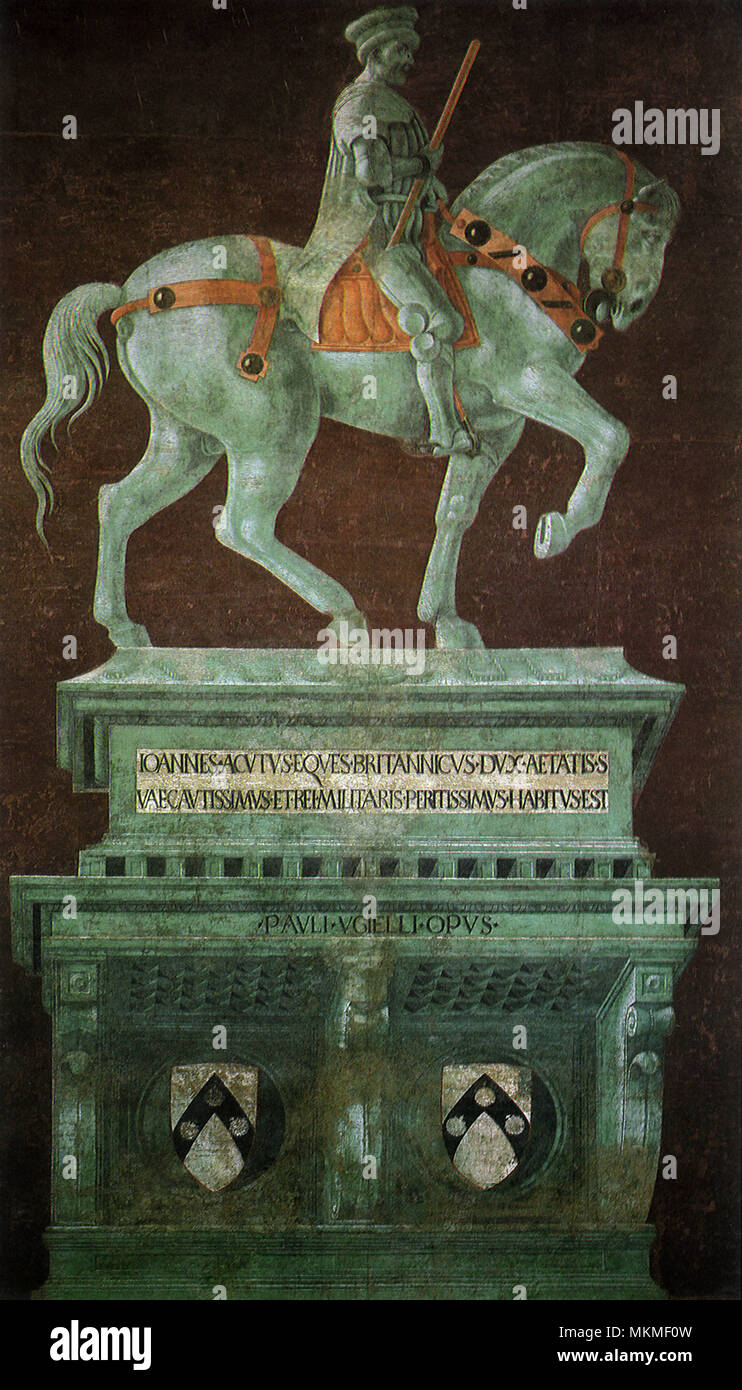
The Funerary Monument (or Equestrian Monument) to Sir John Hawkwood [2] is a fresco by Paolo Uccello, commemorating English condottiero John Hawkwood, commissioned in 1436 for Florence Cathedral. The fresco is an important example of art commemorating a soldier-for-hire who fought in the Italian peninsula and is a seminal work in the.
Funerary Monument to Sir John Hawkwood Top 6 Facts YouTube

Excerpt: The Funerary Monument (or Equestrian Monument) to Sir John Hawkwood is a fresco by Paolo Uccello, commemorating English condottiero John Hawkwood, commissioned in 1436 for Florence's Basilica di Santa Maria del Fiore. The fresco is an important example of art commemorating a soldier-for-hire in the Italian peninsula and is a seminal.
Dr. Peter Paul Rubens on Twitter "Monument to Sir John Hawkwood in the Duomo, Florence, 1436
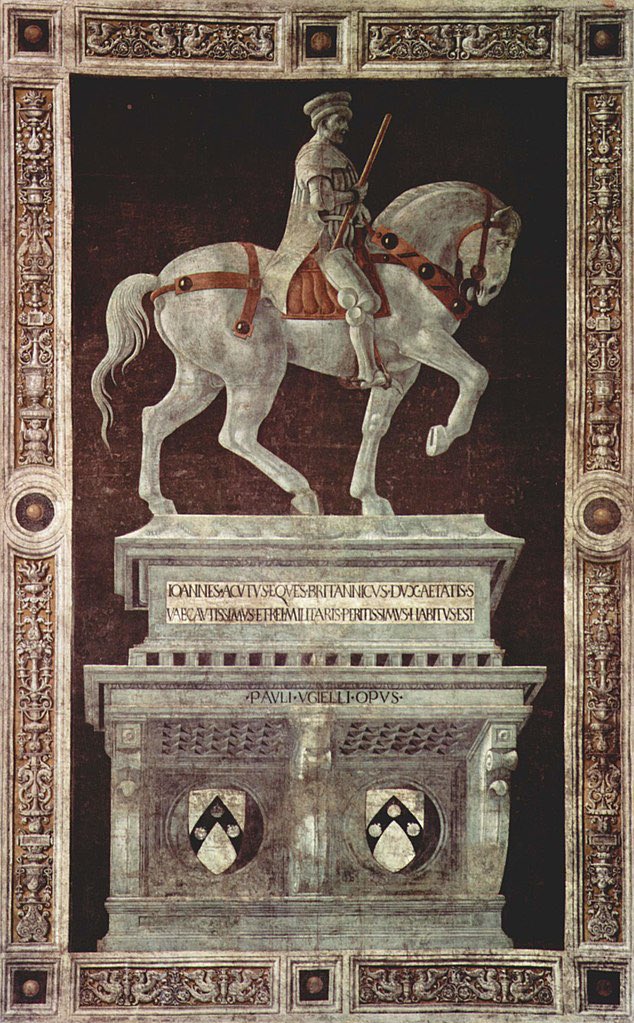
John Hawkwood —verdadero nombre del caballero— además de ser An English man in Florence resulto ser un condottiere (comandante mercenario) que se ganó los corazones toscanos de los oligarcas de la república italiana, quienes lo elevaron al estatus de héroe de guerra enterrándolo en el duomo de la ciudad. Actualmente el cuerpo ya no.
Monumento Funerário a Sir John Hawkwood Por Paolo Ucello Fotografia Editorial Imagem de

El Monumento Ecuestre a Sir John Hawkwood es un fresco de Paolo Uccello, en conmemoración al condotiero inglés John Hawkwood, encargado en 1436 por la Catedral de Santa María del Fiore de Florencia. El fresco es el trabajo más antiguo que se puede adjudicar a Uccello, desde el conocimiento relativo de su carrera comparando los períodos previos a esta creación y a los posteriores.
WikipediaWikiProject Persondata/List of biographies/41 WikiVisually

The Funerary Monument (or Equestrian Monument) to Sir John Hawkwood is a fresco by Paolo Uccello, commemorating English condottiero John Hawkwood, commissioned in 1436 for Florence's Basilica di Santa Maria del Fiore. The fresco is an important example of art commemorating a soldierforhire who fou
Art in Tuscany Paolo Ucello, Funerary Monument to Sir John Hawkwood Travel guide for Tuscany
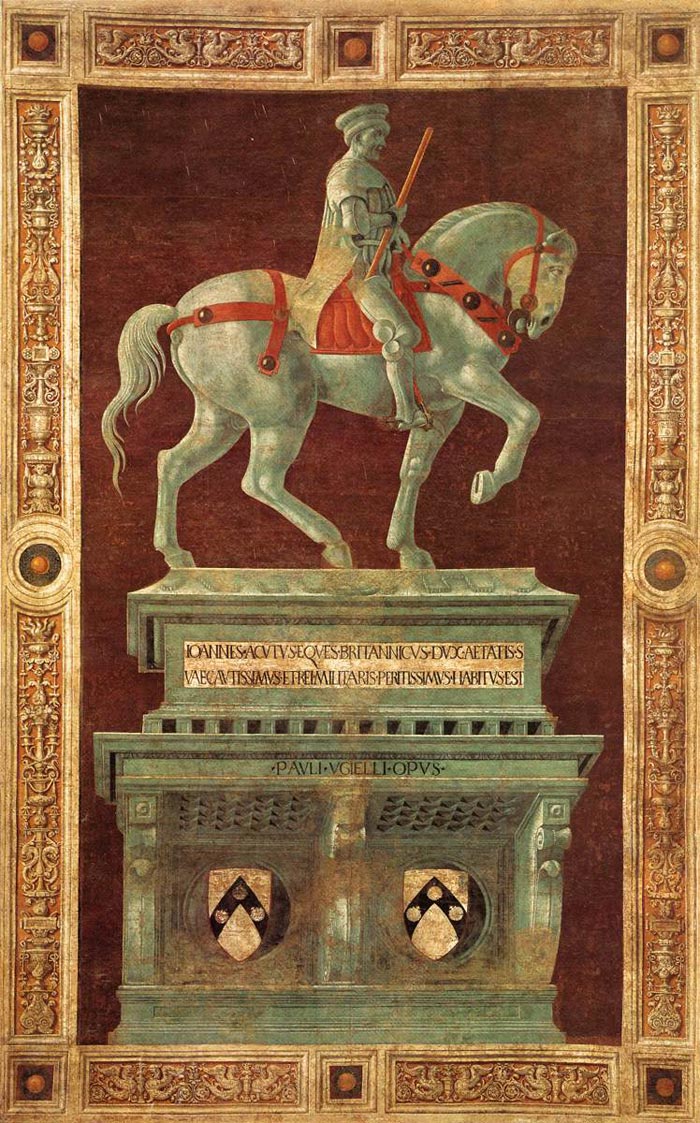
The Funerary Monument (or Equestrian Monument) to Sir John Hawkwood[2] is a fresco by Paolo Uccello, commemorating English condottiero John Hawkwood, commissioned in 1436 for Florence's Basilica di Santa Maria del Fiore. The fresco is an important example of art commemorating a soldier-for-hire in the Italian peninsula and is a seminal work in the development of perspective. The politics of.
Equestrian Monument to Sir John Hawkwood, Uccello Postcard

Paolo Uccello 1397-1475 Funerary Monument to Sir John Hawkwood 1436. 820 x 515 cms | 322 3/4 x 202 3/4 ins Fresco
John Hawkwood, Firenze, In 1436 the Florentines commissioned of Paolo Uccello a funerary

Browse Getty Images' premium collection of high-quality, authentic Funerary Monument To Sir John Hawkwood stock photos, royalty-free images, and pictures. Funerary Monument To Sir John Hawkwood stock photos are available in a variety of sizes and formats to fit your needs.
Obras del Renacimiento (Quattrocento y Quinquecento) Historia del Arte 2
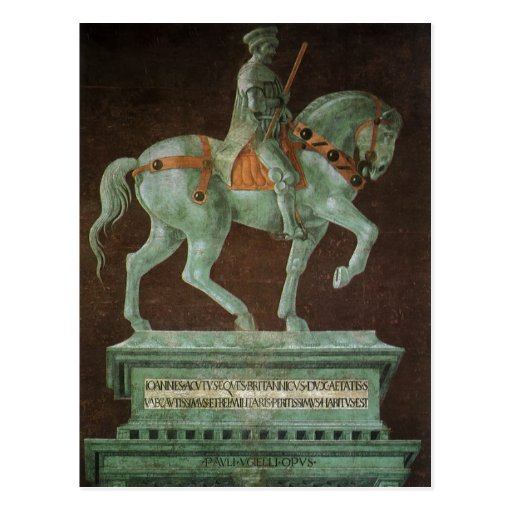
Sir John Hawkwood ( c. 1323 - 17 March 1394) was an English soldier who served as a mercenary leader or condottiero in Italy. As his name was difficult to pronounce for non-English-speaking contemporaries, there are many variations of it in the historical record.
Paulo Uccello's Funerary Monument to Sir John Hawkwood Flickr

Funerary Monument to John Hawkwood is a painting by Paolo Uccello that commemorates the English soldier John Hawkwood. It was commissioned in the year 1436 for the Florence's Basilica the Santa Maria Del Fiore. Funerary Monument is an excellent example of art honouring a soldier who fought in the famous Italian peninsula.
Il monumento equestre a Giovanni Acuto Cavalli & Cavalieri
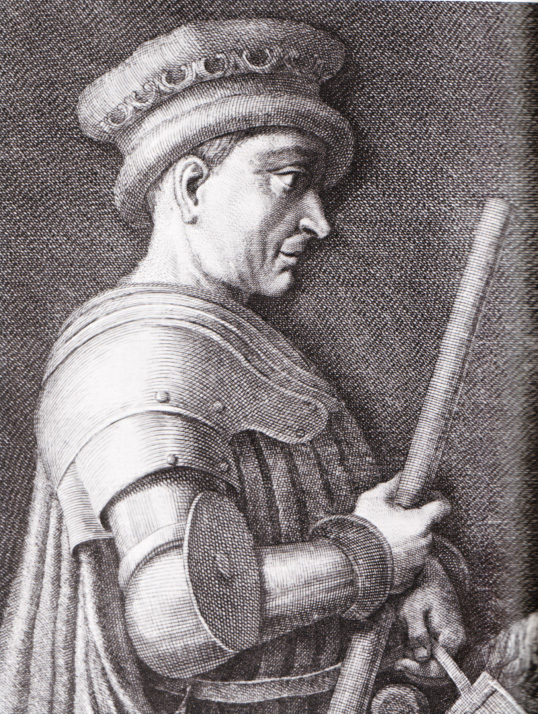
The Funerary Monument (or Equestrian Monument) to Sir John Hawkwood is a fresco by Paolo Uccello, commemorating English condottiero John Hawkwood, commissioned in 1436 for Florence Cathedral. The fresco is an important example of art commemorating a soldier-for-hire who fought in the Italian peninsula and is a seminal work in the development of.
Uccello.Equestrian monument to Sir John Hawkwood.1436.[S.M… Flickr

Imposing fresco painted by Paolo Uccello in 1436 as a commemorative monument to the war captain Sir John Hawkwood, Italianized in "Giovanni Acuto" (Sible Hedingham, UK, around 1320 - Florence, 14 March 1394). The painting was commissioned to Paolo di Dono (called "Uccello") by the Republic of Florence to celebrate the Anglo-Saxon.
.